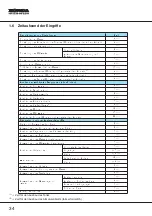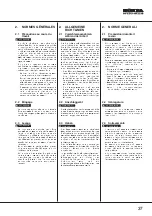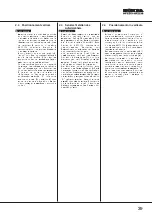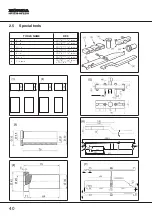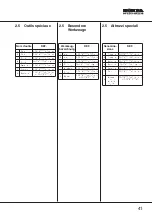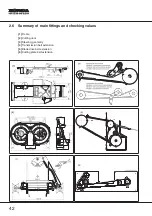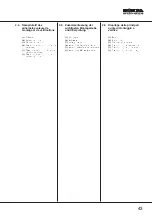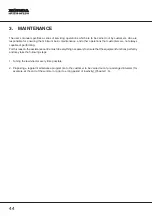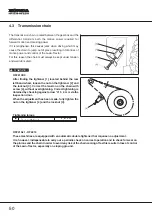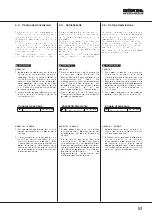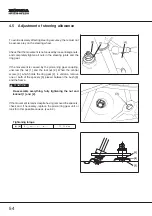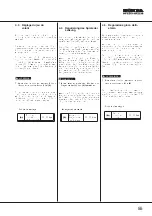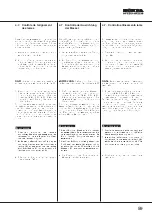
4.
ADJUSTMENTS AND TUNING
This chapter deals with the adjustments to be made to remedy the more frequent performance failures and are
usually resolved by quick checks and tunings.
The timings for these items of work are shown in chapter 1.6.
4.1
Blade engagement
The blades are run from the engine using a trapezoidal the blades are engaged by means of a tightener that is
operated by a lever.
The length of the belt and cable may change after some time
in use, causing irregular operation indicated by the following
signs:
1. belt slipping = belt or cable stretched
2. difficult to disengage, with the blades continuing to run =
belt shortened
In both cases the tensionner needs to be adjusted.
The difficulty in disengaging can also be caused by
grass-cuttings that have accumulated in the end position of the
control lever. Should this be the case, first clean the lever joint
otherwise the tensionner could be incorrectly adjusted.
a. Cleaning the lever joint
1. This operation can be carried out via an inspection door
and can also be made easier by removing the conveyor
(see
5.3).
2. Having reached the lever joint [1], remove the accumulated
grass cuttings [2] which stop the lever from reaching the
end.
b. Tensionner adjustment
1. Remove the upper protection cover [3] in those models
where this is supplied.
2. With the cutting plate in its lowest position, find the
tightener
[4] which is located under the left footboard.
Turn the nuts until the spring reaches the appropriate
length with the blades engaged:
[7]
HF2213
122 ¸ 124 mm
HF2218
94 ¸ 95 mm
3. When the adjustment has been made, check that the brake
lining [5] is working properly. It must stop the blades within
5 seconds of disengaging the blades.
4. Should this not be the case, check that the brake lining [5]
is not worn and/or that the spring [6] is not too taut.
46



